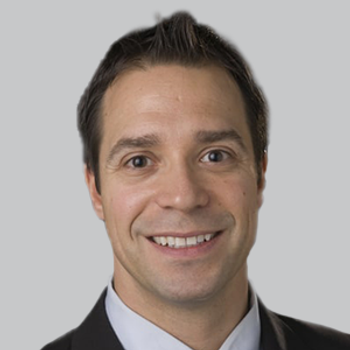
In a large cohort of 848 pediatric participants with challenge-proven food allergy, investigators identified narcolepsy-like sleepiness as a symptom impacting more than 1 in 10 patients with food allergies.

In a large cohort of 848 pediatric participants with challenge-proven food allergy, investigators identified narcolepsy-like sleepiness as a symptom impacting more than 1 in 10 patients with food allergies.

The double-blind trial will feature 180 patients of various spinal muscular atrophy types who will be followed over a 48-week treatment period.

In a recent multisite analysis of 361 patients with REM sleep behavior disorder, 84% had neurological abnormalities in at least one domain observed.

The adjunct professor of human genetics at Emory University School of Medicine talked about efforts from various communities in neurological disorders, such as Rett syndrome, to develop new measures for research. [WATCH TIME: 3 minutes]

The associate professor in the department of neurology at the University of Rochester provided insight on her presentation on psychosis in Parkinson disease and related disorders given at the 2023 ANA Annual Meeting.

The AIRAscore may help optimize the diagnostic process of neurodegenerative disorders by comparing brain structures with collected age- and gender-specific qualitative data samples.

In a recent long-term analysis of a phase 3 trial, the most common treatment-emergent adverse events that led to discontinuation of low-sodium oxybate were cataplexy, headache, nausea, and psychiatric disorders.

The chief medical officer at ML Bio Solutions, an affiliate of BridgeBio, discussed how promising conversations between researchers and regulatory authorities suggest a potential pathway for accelerated approval for limb-girdle muscular dystrophy type 2I/R9. [WATCH TIME: 3 minutes]

Approved in 2016, the newly updated label changes add more clarity to the use of pimavanserin, noting that patients with Parkinson disease with dementia may be eligible for treatment.

The movement disorder specialist at Cambridge University Hospitals NHS Foundation Trust talked about a patient with treatment-resistant Parkinson disease who experienced significant improvement in motor symptoms after using a vibrational therapy. [WATCH TIME: 8 minutes]

Hesham Abboud, MD, PhD, associate professor of neurology at Case Western Reserve University School of Medicine, talked about a study that suggested the possibility of predicting the future clinical phenotype of optic neuritis in patients early on.

Visual hypersensitivity decreased after 3 months of treatment, with a clear association with clinical response to treatment regarding migraine days.

Sodium oxybate, an endogenous GHB/GABAB receptor agonist, is clinically used to promote slow-wave sleep and reduce next-day sleepiness in disorders such as for patients with narcolepsy

The chief medical officer at ML Bio Solutions, an affiliate of BridgeBio, discussed developing therapies for rare neuromuscular diseases such as limb girdle muscular dystrophy 2I/R9 and the unique challenges that occur in clinical trial settings. [WATCH TIME: 5 minutes]

Marcio Souza, president and chief executive officer at Praxis Precision Medicines provided follow-up thoughts on recently announced positive findings assessing ulixacaltamide in patients with essential tremor.

The director of the Pediatric Epilepsy Center at UCSF discussed STK-001, an antisense oligonucleotide in development for Dravet syndrome, and the promise behind this type of targeted approach. [WATCH TIME: 4 minutes]

Here's some of what is coming soon to NeurologyLive® this week.

Acute and sustained treatment with ulotaront did not show a statistically significant decrease from placebo in total number of cataplexy events and had no significant change in other symptomatic ratings over a 2-week treatment period.

A panel of neurology experts detailed the importance that community leadership and creating a positive environment can do for patients with rare neurologic disorders [WATCH TIME: 5 minutes]

Test your neurology knowledge with NeurologyLive®'s weekly quiz series, featuring questions on a variety of clinical and historical neurology topics. This week's topic is Alzheimer and dementia.

Sanford Siegel, Douglas Kerr, MD; and Benjamin Greenberg, MD, detailed the need for greater research on treatment strategies that repair myelin improve neurodegeneration, as well as expanded knowledge on how neuroimmune disorders present. [WATCH TIME: 5 minutes]

Findings from a recent study showed that pain in the lower limbs of children and adolescents, commonly referred to as growing pains by providers, may reflect a precursor or comorbidity with migraine.

Neurology News Network for the week ending September 16, 2023. [WATCH TIME: 3 minutes]

Positive findings from a phase 2b/3 study investigating blarcamesine, an investigational agent, demonstrated efficacy among patients with early Alzheimer disease.

Take 5 minutes to catch up on NeurologyLive®'s highlights from the week ending September 15, 2023.

Benjamin Greenberg, MD; Douglas Kerr, MD; and Sanford Siegel provided perspectives on the gaps in the epidemiology and treatment paradigm for patients with rare neuroimmune disorders. [WATCH TIME: 3 minutes]

Black adults who had a stroke because of a severe blockage of a major artery in the brain were younger, had higher rates of high blood pressure and type 2 diabetes, and had lower physical activity scores compared with nonBlack adults.

The adjunct professor of human genetics at Emory University School of Medicine discussed how the Rett Syndrome Behavior Questionnaire has evolved into a versatile tool with a broader scope. [WATCH TIME: 10 minutes]

In a recent case-control study of 836 human serum samples, including 332 AQP4-IgG–positive and 504 negative samples, the novel immunodot assay showed a 99.4% sensitivity and a 99.2% specificity.

The associate professor at Washington University School of Medicine discussed the reasons for why some institutions have different risk benefit analyses for thrombolysis, and whether this causes challenges for the healthcare system. [WATCH TIME: 4 minutes]